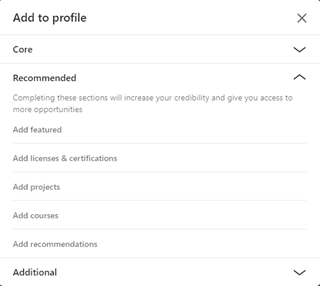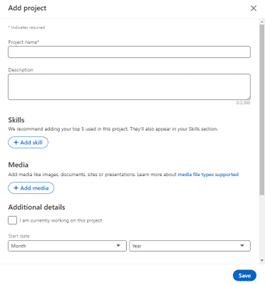Are you a seasoned senior leader eager to boost your online presence this year?
In today’s digital landscape, a well-optimised LinkedIn profile is your ticket to success. This guide offers practical strategies to enhance your profile, empowering you to establish a commanding online presence.
Understanding the significance of LinkedIn profile optimisation
With over 1 billion users worldwide, LinkedIn is the go-to platform for professional networking and job searches. Your LinkedIn profile isn’t just a static resume; it’s a dynamic tool that can drive job offers, partnerships, and speaking engagements. Let’s explore the continuous process of LinkedIn profile optimisation and unlock a world of professional opportunities.
Key elements of a powerful LinkedIn profile
- Crafting a captivating headline
Develop a headline that showcases your expertise using concise, descriptive language. Incorporate industry-relevant keywords for heightened visibility.
- Writing an engaging summary
Your profile summary is your chance to tell your story and highlight achievements. Keep it concise, engaging, and tailored to your target audience. Utilise storytelling techniques to captivate your audience.
- Highlighting experience and achievements
List your professional experience, emphasizing accomplishments and milestones. Quantify achievements to provide tangible evidence of your capabilities. Focus on the impact made in each role.
- Importance of skills, endorsements, and recommendations
Showcase relevant skills and encourage endorsements. Seek recommendations from previous employers or clients to enhance credibility. Regularly update your profile with new accomplishments and experiences.Read LinkedIn optimisation step-by-step guide: from setup to standout.
The art of personal branding on LinkedIn
Establishing a professional identity is central to personal branding—defining strengths, passions, and values. Consistency across your LinkedIn profile and interactions with content aligns with your narrative.
In an episode titled “What is the Value of LinkedIn for New CEOs?” on the Propel Group Podcast, it has been highlighted that intentionally sharing ideas, vision, and values on platforms like LinkedIn emerges as a potent strategy for leaders to establish a personal brand and adeptly manage their reputation.
- Defining your professional identity
Take the time to define your professional identity and what sets you apart in your field. It’s not just about listing your job title and responsibilities but understanding your unique strengths, passions, and values. - Building a Consistent Brand Image
Consistency is key in personal branding. Ensure all elements of your LinkedIn profile reflect and reinforce your brand image. Your headline should be concise yet impactful, capturing the essence of your personal brand in just a few words. Your summary should provide a compelling overview of your professional journey, highlighting key achievements and aspirations. - Communicating your value proposition
Clearly communicate the value you offer to potential employers or business partners. Use your experience, skills, and achievements to showcase your expertise and demonstrate how you can solve their problems or meet their needs. Don’t just list your responsibilities; highlight the impact you’ve made in previous roles. Use numbers, statistics, and concrete examples to quantify your achievements. - Consistent content posting
Regularly posting content on LinkedIn is crucial for maintaining an active and engaging presence. Share industry insights, thought leadership pieces, or updates about your professional journey to reinforce your personal brand.Remember, personal branding is an ongoing process. Regularly update your LinkedIn profile to reflect your latest accomplishments and professional growth. Stay active on the platform, engaging with others and sharing valuable insights. By consistently nurturing and refining your personal brand, you position yourself as a credible and influential professional in your field.
Leveraging LinkedIn's features for senior leaders
In addition to profile optimisation, LinkedIn offers a range of features that senior leaders can leverage to enhance their digital presence and engage with their network.
- Publish articles on LinkedIn
Use LinkedIn’s publishing platform, known as “Articles,” to share long-form content and showcase your expertise. Provide valuable insights, share industry trends, and position yourself as an expert. - Posts and comments
Engage with your network through posts and comments to stay visible and build relationships. Regularly sharing relevant and insightful content not only keeps you top of mind but also demonstrates your knowledge and expertise. Additionally, asking thought-provoking questions and contributing to meaningful discussions in your industry can help you establish yourself as a go-to resource for valuable insights. - LinkedIn groups
Participating in relevant LinkedIn groups and discussions can be a game-changer for senior leaders looking to expand their network and foster connections with like-minded professionals. By joining groups that align with your interests and expertise, you can contribute valuable insights, share resources, and engage in conversations that establish your authority and expand your reach. - Projects section
Another feature that senior leaders can leverage on LinkedIn is the ability to showcase their accomplishments and expertise through the “Projects” section. This section allows you to highlight key projects you have worked on, providing potential connections and employers with a comprehensive view of your capabilities.


- Webinars
LinkedIn offers the option to create and join industry-specific events and webinars. By participating in these events, you not only demonstrate your commitment to professional development but also have the opportunity to network with industry leaders and gain valuable insights. -
Recommendations
LinkedIn’s “Recommendations” feature is a powerful tool for senior leaders. By actively seeking and providing recommendations, you can build credibility and establish a strong professional reputation. Recommendations from colleagues, clients, and industry peers can serve as powerful testimonials of your skills and expertise. -
Creator Mode
Enhance your reach with Creator Mode. Share engaging content, access valuable analytics, and connect with your audience authentically. Elevate your leadership brand with this powerful feature.
Advanced LinkedIn strategies for 2024
Staying updated with LinkedIn’s algorithm changes is crucial for maximising visibility. Leverage LinkedIn Analytics for profile improvement by identifying areas for enhancement. Explore premium features like LinkedIn Sales Navigator and LinkedIn Learning for advanced networking and professional development.
Maintaining your LinkedIn profile for long-term success
Consistency is key for long-term success. Regularly update your profile with the latest accomplishments, certifications, and projects. Ensure existing content accurately represents your skills, responsibilities, and goals.
By following the strategies outlined in this guide, you’ll be on your way to creating a powerful LinkedIn profile that showcases your expertise, attracts opportunities, and enhances your professional brand in the dynamic world of professional networking in 2024. Start optimising your LinkedIn profile today!















